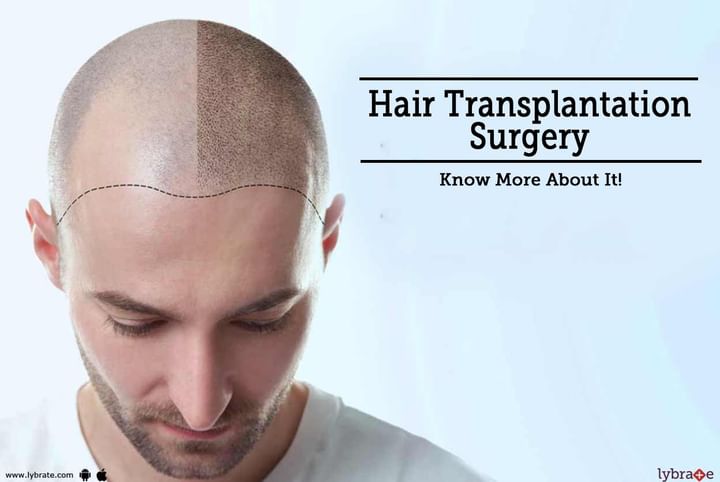Hair Transplantation Surgery - Know More About It!
What is Hair transplantation?
Hair transplantation is a method of Hair restoration surgery used to treat baldness and hair loss. Follicular unit transplantation or FUT is the latest method of Hair restoration surgery whereby follicular units are transplanted from the donor area (i.e. area where there is abundant hair usually in the back of the head) to the recipient area( balding area usually front or top of scalp). The follicular units occur naturally in groups on the scalp and contain 1,2, 3or 4 hairs along with oil glands, nerve and blood vessel bundle and are enveloped by a sheath of tissue.
How many types of hair restoration surgery are available?
Follicular Unit Transplantation or FUT is of 2 types: Strip method and FUE ( follicular unit extraction). They both differ in terms of how the follicular units are harvested. In the strip method of harvesting, the strip bearing the follicular units is removed from the back of the head and this is dissected into individual units under magnification. After the strip is removed, the edges of the skin are sutured. This leaves a scar in the back of the head running from one ear to the other. In the FUE method, the units are harvested directly from the back of the head using a tool that makes punches. There is no scar with this method and the healing time of the wound is quicker.
What factors does the result depend on?
There are several factors that influence who will have a better outcome from the transplantation. Not only the method of surgery chosen but factors like hair density, waviness of the hair, colour contrast between the hair and scalp, thickness of the hair, size of the donor area, elasticity of the scalp are all important. Besides this different practitioners have different results, so the skill of the surgeon is also a factor.
What does the surgery involve?
A. In the Strip harvesting method, after the strip is removed, it is sent for dissection to the team of technicians. Meanwhile, the skin is closed with stitches in layers. The surgeon then sits the patient upright and then designs the hairline in the front and on top of the head with a marker pen. After numbing the skin with local anesthetic injections he then makes tiny holes in the areas of balding. The team then starts inserting the follicles or grafts into the prepared holes in the recipient area.
In the FUE method, units are removed directly from the back of the head and are trimmed by the technicians. The rest of the steps are similar to that of the strip method.
How many Transplant sessions will I need?
This will depend on the amount of hair loss. Unless it is a small area of balding, usually there will be 2-3 sessions needed.
Will I have a scar?
With the strip method, there will be a scar on the back of the head but with improved surgical methods used nowadays, it will be a fine scar. Whilst closing the wound, a Trichophytic type of closure is employed which allows hair to grow through the scar that will camouflage the scar. In the FUE method, there is no visible line like scar. There is tina dot like scars from the areas where the punches were taken but this is hardly visible.
What precautions should I take prior to surgery?
- Make sure you have all your questions and doubts clarified in your consultation with your doctor. Write down on a piece of paper.
- Get good sleep the night before the surgery
- Get a cap with an adjustable clasp with you on the day of the surgery
- Arrive on time. Hair transplantation surgery takes plenty of hours, you don’t want to delay the whole team working for you into the late hours of the evening.
- Wash your hair on the morning of the day of the surgery.
What happens after surgery?
- You will be given instruction, painkillers and antibiotics by your doctor.
- Get your hair washed at your doctor’s if you live locally
- Redness in the donor and recipient area is common and will take time to resolve.
- Avoid exposing your scalp to the sun too much.
- Scabs will form and will remain for about 10 days after which they will begin to fall off.
- Sutures are removed 10 days after the surgery.
- Over the next few weeks, the hairs will shed. This means that the grafts are in resting phase and will remain so for about 3 months.
- After this period over the next few months, the hair will start to grow from the grafts.
- Take pictures regularly to note the developments.



+1.svg)
